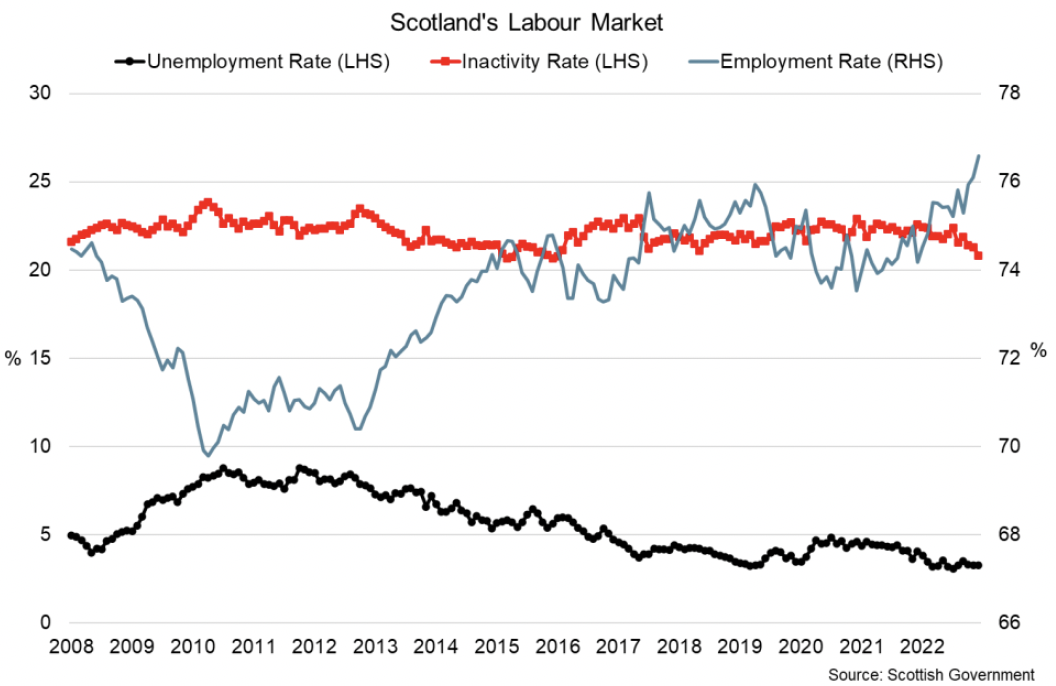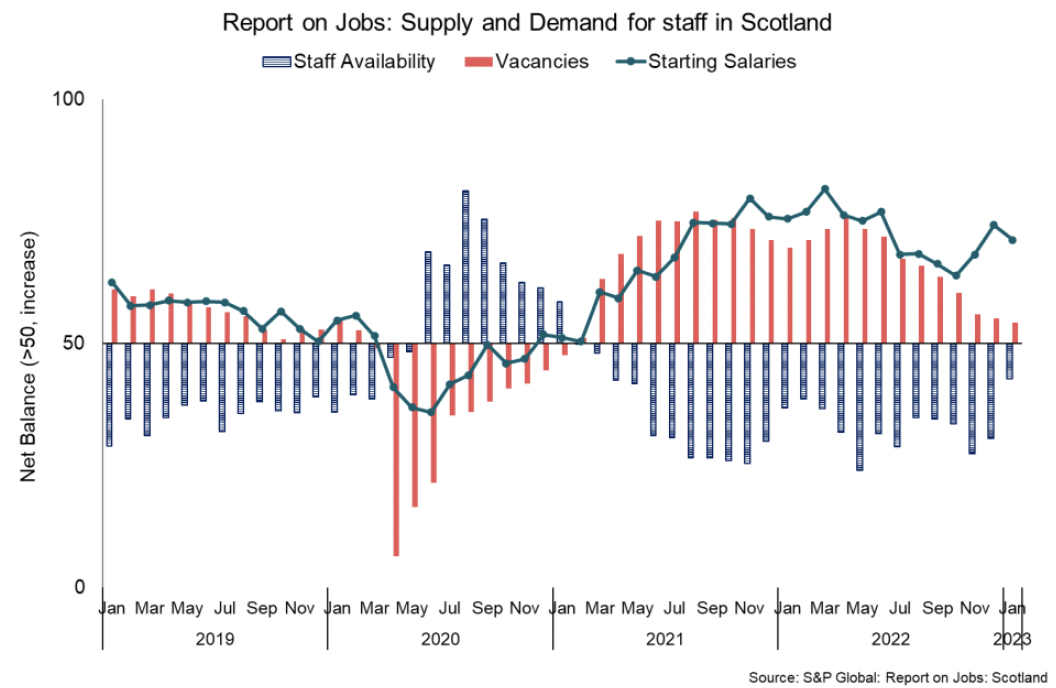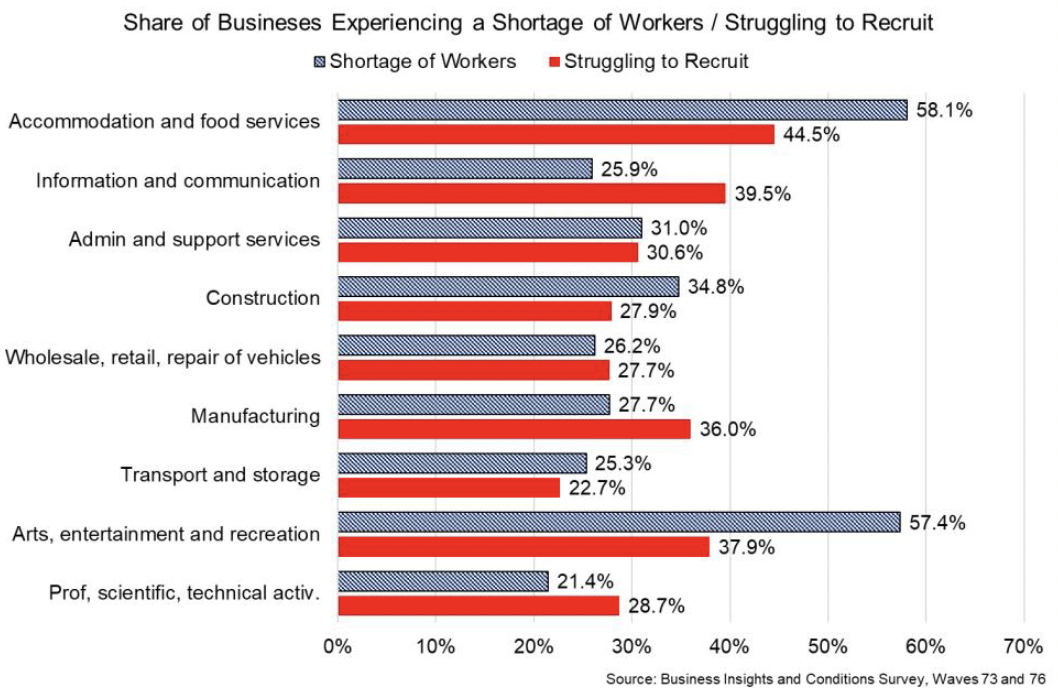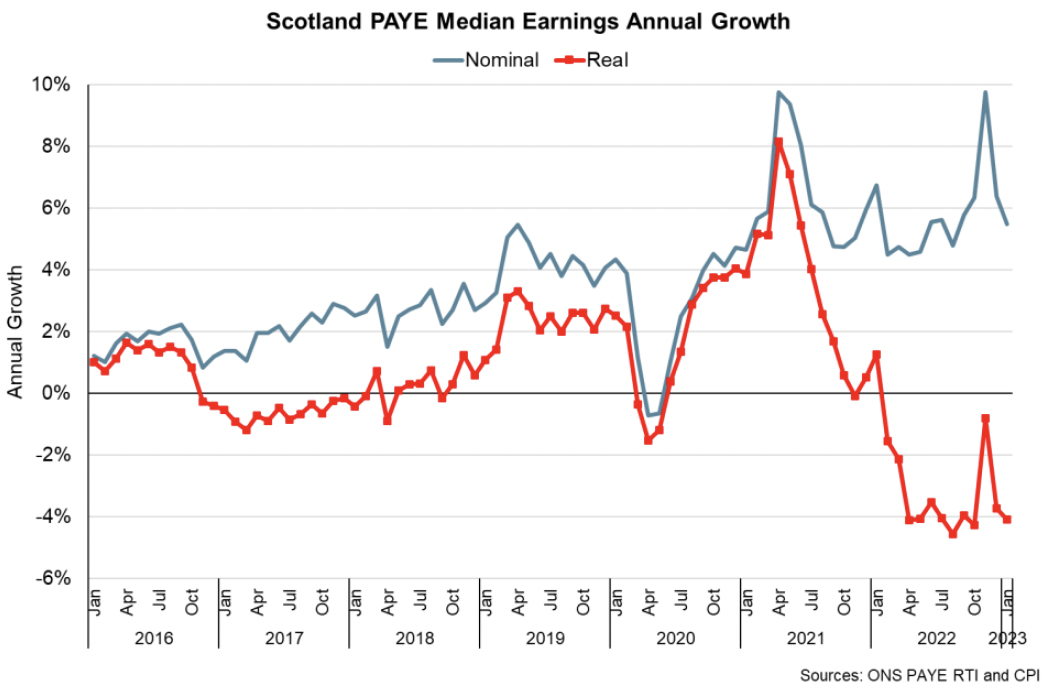Monthly economic brief: March 2023
The monthly economic brief provides a summary of latest key economic statistics, forecasts and analysis on the Scottish economy.
This document is part of a collection
Labour Market
The employment rate rose further at the end of 2022 however the pace of recruitment activity has moderated.
Official labour market statistics
- The latest labour market statistics for October to December 2022 in Scotland show there were 2.7 million people in employment with the employment rate rising by 2.4 percentage points over the year to 76.6% (UK: 75.6%) and 93,000 people were unemployed with the unemployment rate falling 0.8 percentage points to 3.3% (UK: 3.7%).
- Scotland's inactivity rate fell 1.8 percentage points over the year to 20.8% with 717,000 people economically inactive in Scotland. The primary reason for economic inactivity is long term sickness. The fall in the inactivity rate continues a recent downward trend in Scotland with overall inactivity rates broadly similar to pre-pandemic levels. This is a different recent pattern to the UK as a whole, in which the inactivity rate increased by 0.1 percentage points over the year to 21.4% continuing an upward trend from the start of the pandemic.[8]

- Latest PAYE data signals a further increase in employment in January with the number of PAYE employees rising 2,742 (0.1%) over the month and is 48,302 higher than in January last year.[9]
Demand and supply of staff
- Business surveys signal that labour market conditions have remained tight in January, however recruitment activity shows further signs that it has moderated compared to the first half of 2022.
- The RBS Report on Jobs for January signalled that growth in demand for staff remained positive (54.7) but had slowed to its softest rate since the start of 2021.[10] For businesses seeking to recruit, supply side challenges in the labour market have also continued with candidate availability (labour supply) falling in January (42.9), however at the softest rate since April 2021. Alongside underlying challenges of skills shortages and Brexit, recruiters in recent surveys cite the uncertain outlook and cost of living crisis as key factors weighing on the movement of labour.

- The underlying tightness in the labour market continued to provide upward pressure to starting salaries in January with the overall pace of growth remaining significant, however eased over the month (71.2) and remained slightly slower relative to the first half of 2022.
- Labour shortages are affecting a range of sectors with BICS data indicating 33.6% of businesses experienced a shortage of workers at the start of January.[11] The overall share has fallen from the end of November when it was 43.4%, however remains highest in accommodation and food services (58.1%), arts, entertainment and recreation (57.4%), and construction (34.8%) sectors.

- Furthermore, when asked about recruiting in January, 38.7% of all business reported experiencing difficulties recruiting employees. This is highest within accommodation and food services (44.5%) and information and communication (39.5%). Most businesses responded that a lack of qualified applicants (63.9%) and a low number of applications (55.6%) were reasons for why the business experienced difficulties in recruiting employees, while 20.8% reported not being able to afford an attractive pay package to applicants.
Earnings
- Nominal median monthly PAYE earnings grew 0.4% in January to £2,206. The monthly figure can be volatile, and over the past year earnings have grown 5.5%.[12]
- However, adjusting for inflation, which was 10.1% in January, real median earnings fell 4.1% on an annual basis, the twelfth consecutive month of negative annual growth.

- The sharp fall in real median earnings over the past year emphasises the cost of living challenges that continue to face individuals and households.
Contact
Email: OCEABusiness@gov.scot
There is a problem
Thanks for your feedback